‘Irish Bard’ Finds Family Roots on Wolfe Island
by: Brian Johnson
In the wee hours before Christmas Eve, Jannet Walsh suddenly bolted upright in her bed. Or what she believed was her bed.
The whole cottage was trembling, threatening at any moment to come apart. Outside, the screaming WNW wind, later clocked at 75-80 knots, continued its incessant whistling, while small puffs of snow crept into the inside sills of her bedroom window. And every window to windward of the house. Throwing the covers back, she peered out the bedroom window, which revealed nothing but a white void. Rubbing tired eyes, she looked around for almost a full minute in the pitch dark. Then her bed started to tremble – on its own. Clearing her thoughts and standing up carefully, she turned on the bedside light, looked around and remembered. This isn’t Murdock, Minnesota. Or County Kerry, Ireland. Or somewhere between. Oh yeah…I’m on that island, Wolfe Island. On the St. Lawrence River. In the former Spoor cottage, I’ve rented in Marysville. And then the wind blew a door shut, somewhere.
Walsh was lucky. Almost everywhere else on Wolfe Island, the power was out. What she didn’t know right then, was the ferry had also tied up in Kingston. Both the power and the ferry would remain off over Christmas until the winter storm would subside.
Waking up in a strange bed is nothing new to ‘Irish Family History Detective’ Jannet L. Walsh. This fiery-red haired lady of Irish descent is on a mission, and has been for most of her life: finding her family roots and routes from County Kilkenny, Ireland, during the Great Famine of the 1840’s, to Dublin Township, Swift County, Minnesota, USA. Her father told her at a young age that there was a thirty-five year stopover on their journey, from 1842 to 1877. On an island in the St. Lawrence River, in Canada, about which we know nothing. Wolfe Island, near Kingston.
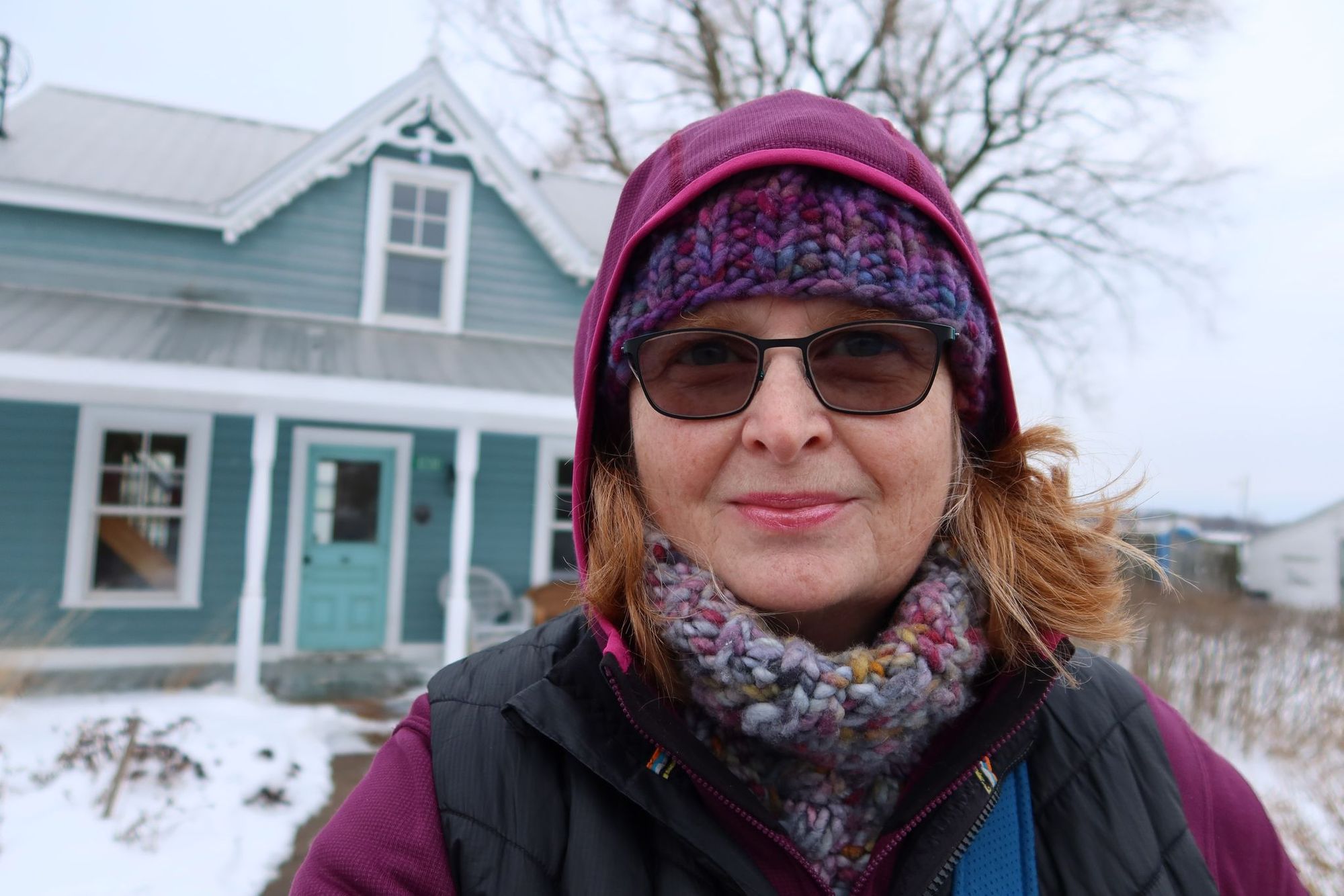
“As a child, I heard about Ireland from my late father, Martin Walsh Jr., as he is the first family member to return to Ireland, in 1953,” she told me later. “It was not until I moved home from Florida to Murdock, MN, in 2010 that I started to search to find origins of my family in Ireland. I learned of the Great Famine and how my family emigrated to North America, first to Canada and then to the United States . . .” Travelling to Ireland not once, but five times beginning in 1980, Walsh walked the countryside, in different counties, visiting various pubs and listening to many stories from many people, sharing their culture while staying in cottages similar to one her great-great grandparents would have lived in, before they departed for Canada. In 2018, all alone, she spent Christmas and the New Year 2019 in Killarney, County Kerry, Ireland.
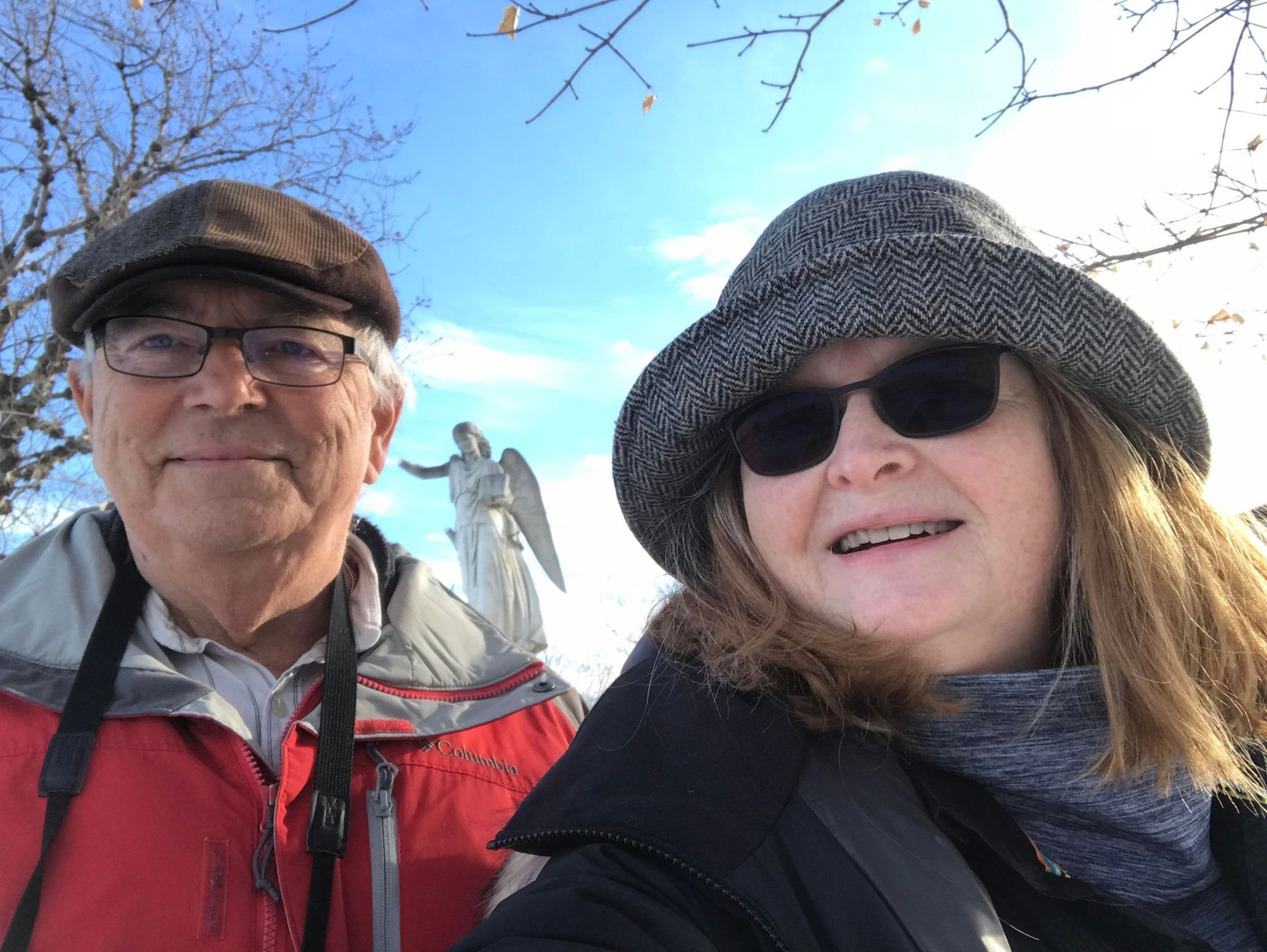
I met Jannet Walsh at the train station in mid December. She appeared wearing sun glasses, dressed for an Arctic expedition, parka hood drawn tight, struggling to disembark the train in her heavy snow boots, carrying more baggage than the entire Franklin expedition of 1845 would have had. We had been in touch by e-mail and phone through the Wolfe Island Historical Society, making plans for her wintertime visit. All alone through Christmastime and the New Year, she had said. Really?
This determined ‘Irish bard” is an award winning photojournalist with more than 20 years of experience. She is also a writer, a public relations professional, and an educator. She told me she was now on a quest. She has written a book on her family’s plight, a creative nonfiction narrative called: “Higgledy-Piggledy Stones: Family Stories from Ireland and Minnesota” scheduled for publishing in 2023. This would hopefully be a second book, a continuation of her family’s migration, filling in the missing link. Wolfe Island is the final phase “. . . to splice together 35 years my family lived on Wolfe Island and Kingston area after they departed Ireland in 1842.” Funding for her trips was provided by the Southwest Minnesota Arts Council, SMAC, which is funded by the McKnight Foundation. “My Walsh family departed Wolfe Island in 1877, to be part of a Catholic colony in rural Minnesota, started by the late Archbishop John Ireland of St. Paul Minnesota.” She is the first of her family to return to Wolfe Island and the area in 146 years. “I want to see and walk where they lived and feel the culture of the community,” she said. “I wanted to come and experience winter and Christmas similar to what my family did when they lived over here. It’s likely that 1876 was my ancestors last Christmas on Wolfe Island.”
While prepared, however, she didn’t count on the freakish weather hitting the island with a vengeance; one of the worst wind and snowstorms to hit the area in some forty years!
On the mild afternoon of her arrival, before the storm and after disembarking the train, we stood at ‘The Angel of Mercy’ gravesite at St. Mary’s Cemetery in Kingston, where some 1,400 Irish bones lay, transferred in 1966 from a mass, waterfront grave. Fleeing the Great Famine in Ireland, barely surviving a crowded, fetid Atlantic passage only to die of typhus on Kingston’s shore. Walsh became lost in thought here. So many, unknown and long forgotten. After a few silent moments, we departed, then arrived at St. Mary’s Roman Catholic Cathedral, where her great-grand grandparents Michael Walsh Sr. and Catherine Summers, both from Ireland, were married on November 2, 1857.

She is the first of her family to visit the cathedral since that time. Inside, the cathedral was filled with music, as the organist was practising for the Christmas season on the monumental 114 year old pipe organ, way at the back and high in the choir loft. Settling then at her digs in town for two more days, she caught the last boat to Wolfe Island in her rental car on December 23. It was only mid afternoon. With dark, ominous clouds flying overhead, the wind had been increasing from the west northwest to 40-45 knots. Snow, beginning around noon, was now a full on blizzard. The fully loaded ferry Wolfe Islander III rocked and bounced heavily during the crossing. “I thought I was going to be seasick,” she lamented.
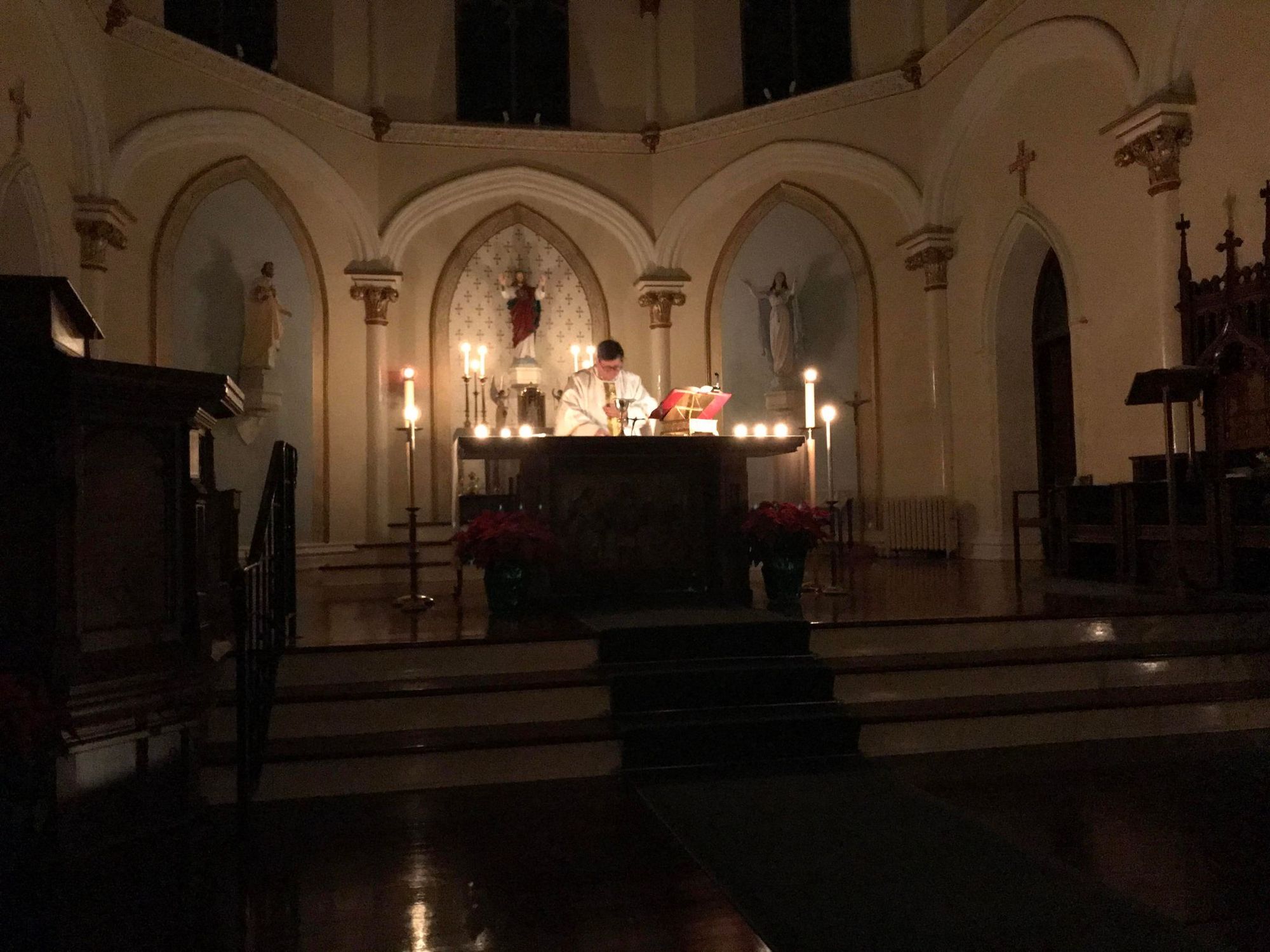
Surviving her first island night, the blinding snowstorm continued all the next day. Advised against driving anywhere, she set out to explore the small village on foot, scaling deep snowdrifts every few feet. Nothing new to a Minnesotan. “I attended Christmas Eve mass at Sacred Heart,” she said, “walking against the wind and blizzard conditions from Spoor cottage to the church, about five blocks, to find out that the mass would be by candlelight, including the one I was holding. There was no power or heat. This was one of the most authentic, humbling moments I experienced on the island, as my family would not have electricity back then either. I will cherish this for years to come. Friendly strangers gave me a ride back to Spoor cottage where I made a salad and potato soup in the kitchen and talked with family and friends back home.”
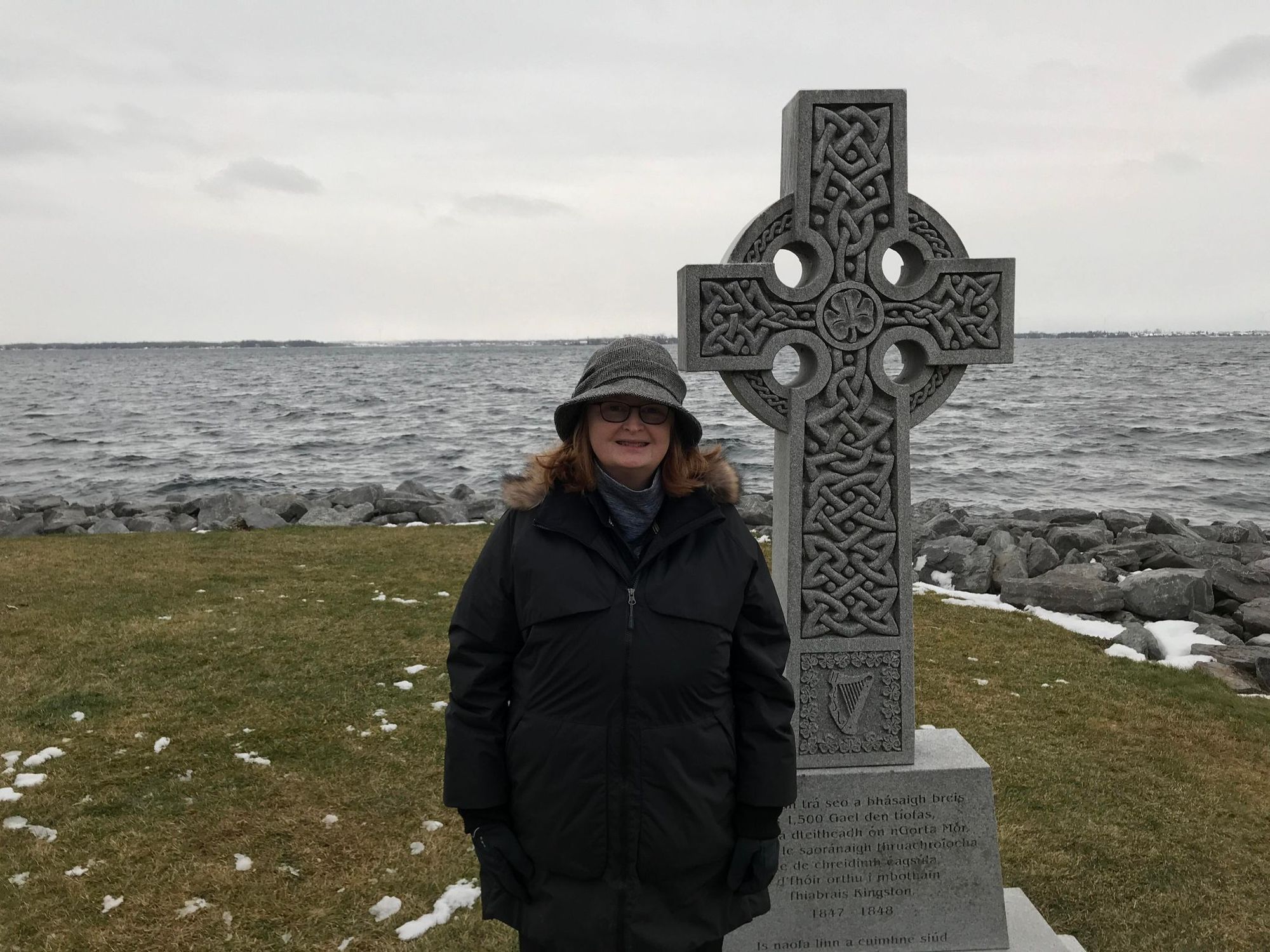
On Christmas Day, everyone was welcome at Hotel Wolfe Island, which still had power and stayed open for anyone needing heat, a hot meal, or companionship. Walsh went over and fit right in. In the next few days, strangers became friends, fascinated by her story. A day later, she plodded her way through deep snow to the old catholic cemetery, behind Sacred Heart Church. An islander called out from her back porch to ‘not get lost through that forest’ as Walsh made her way past the old, former rectory and finally spotted the ancient headstones among deep drifts. Many Irish names greeted her here. “A woman, my great-great grandmother, Bridget Moran, (Michael Sr.’s second wife) a name not said for generations, is here,” she said. Her burial is documented here, we found. But too many stones are buried in snow or missing.
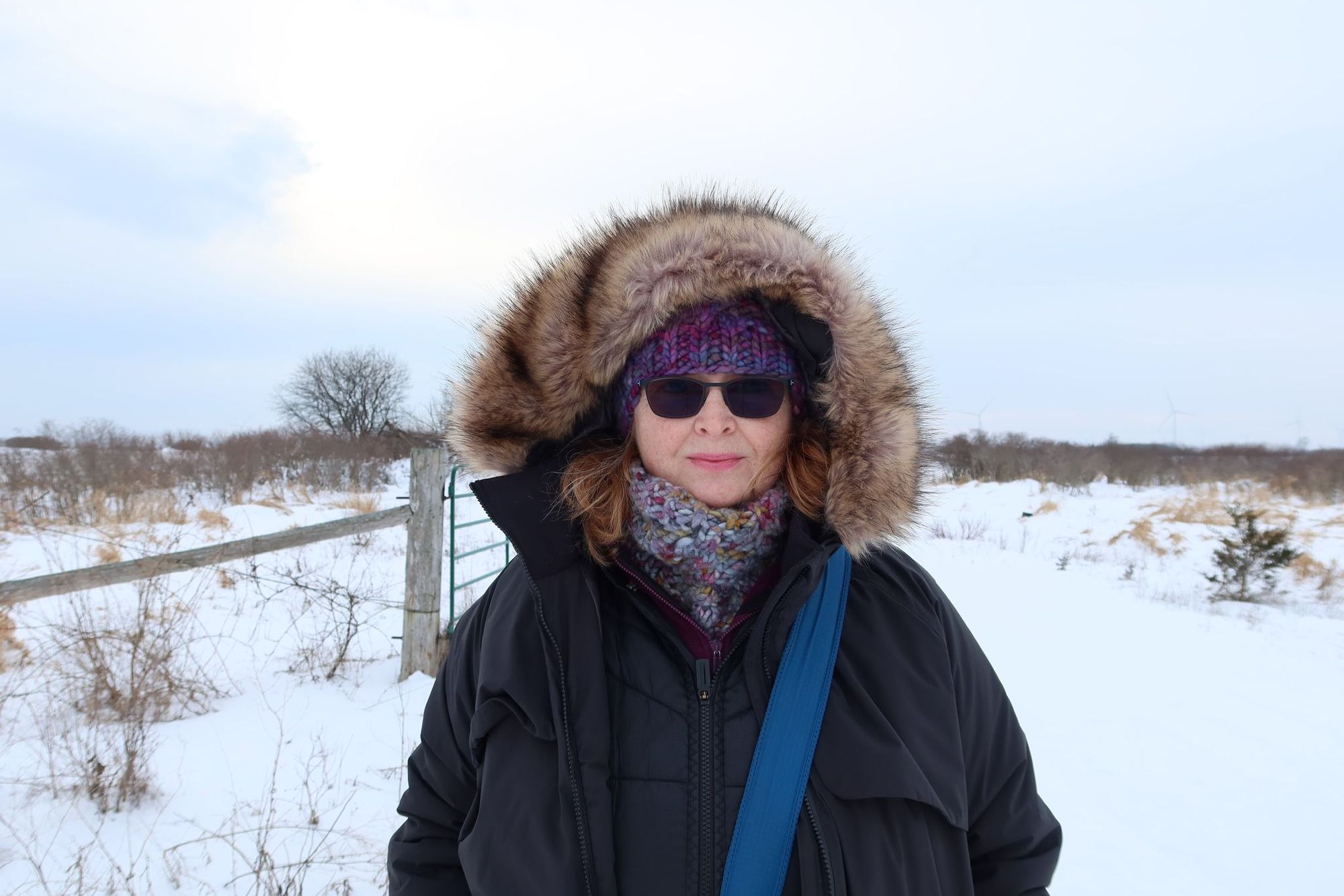
The next day, Walsh returned to her farm roots out on the 7th line road, the actual location of the former Michael Walsh 100 acre farm, pointed out by Islander Brian MacDonald, resident genealogist. No buildings, house, or barn from 1877 exist now. “I see my family walking the same snow covered laneway back to where an eight foot log cabin once stood,” she said. “Likely at least eight babies were born down this road . . .” Later, Walsh met Island bard, storyteller, and respected Island historian Johnny O’Shea at Fargo’s General Store. “We talked about his origins in County Kerry, Ireland, and his family’s arrival here in 1846. He truly is Wolfe Island’s teacher, and living cultural heritage of knowledge.”
All too soon Jannet Walsh’s wintertime island exploring was over. Mission accomplished. The missing family link finally connected. But there might be more. WIHS president Shauna Kingstone and I drove her to the train station. Another 1,931 km, three days of travel, on three different train connections to Murdock, Minnesota awaited her. In the busy station, Walsh toyed with the idea that maybe she truly was transported back in time; an island Christmas from long ago. It really was surreal at times, she felt, but the trip was well worth it. Church by candlelight, a lady on a far porch pointing the way through the forest. Everyone so friendly, easygoing. It’s the people themselves and their island culture she’ll miss most of all. They probably haven’t changed, through the many years. How everyone came together during the power outage and everyone she met took the time to assist her, this outsider. Or was she? “It really took the village of Marysville and the hardy island people to help reveal my family’s roots on Wolfe Island,” she said. “I’m coming back.”
As lifelong Islander Johnny O’Shea would say, “we’re all birds of a feather.”
By Brian Johnson, Wolfe Islander III Captain (Retired)


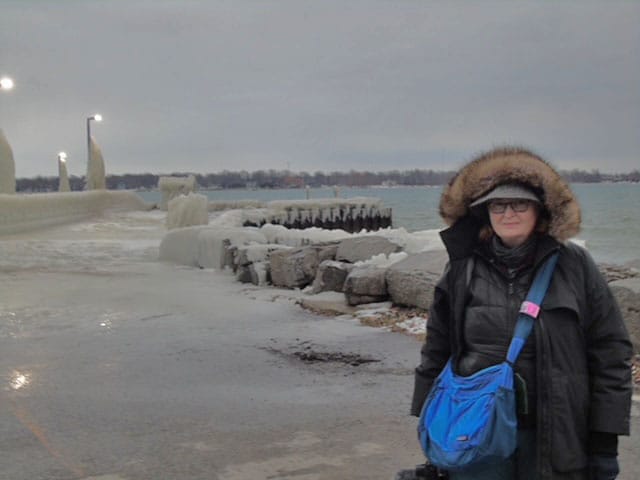



Please click here if you are unable to post your comment.